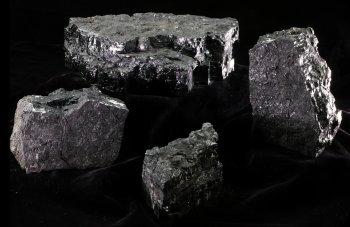Coal: The Foundation of a State
Coal has been mined in Illinois since before statehood. French explorers documented coal seams being exploited near Ottawa 350 years ago. The first record of coal being mined (or dug) by settlers in Illinois was in 1810. The formation of coal dates back much further, up to 350 million years ago during the Pennsylvanian Period. The state owes its vast coal reserves to now-extinct trees, ferns, and other plants that lived, died, and piled up in the coastal lowlands of the shallow seas that once covered much of the state. Dying plant matter accumulated and was preserved in water. Those deposits were later buried by sediment and eventually transformed by extreme heat and pressure into lignite and finally coal.
Most of the state’s coal reserves are in the southeastern two-thirds of the state. Coal was mined underground by a room and pillar system that left some coal in place to hold up the roof of the seam. Later, surface mining employed heavy machinery to scrape off the overburden to reach the layers of coal below. By the first part of the 21st century, more than six billion tons of coal had been mined in Illinois. Even as coal production has declined due to competition from cleaner-burning coal from western states, the coal industry in Illinois still accounts for about $1 billion in economic activity each year.
Source: Geology of Illinois, edited by Dennis R. Kolata and Cheryl K. Nimz





